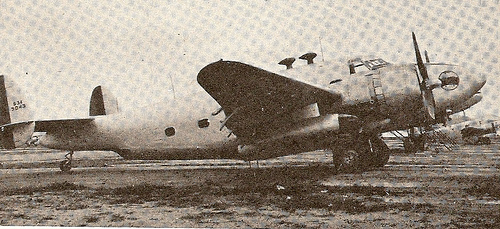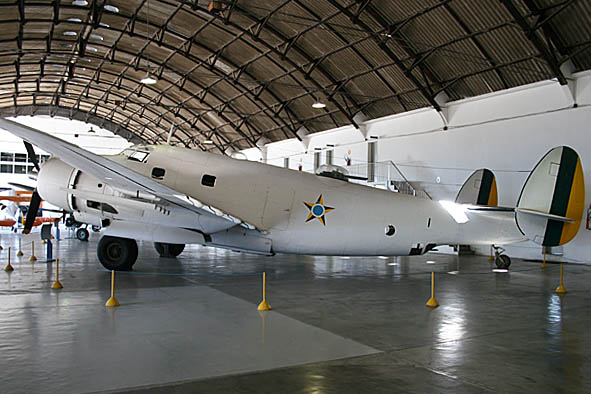BRAZILIAN AIR FORCE FAB *
19)LOCKHEED PV 1 VENTURA
Total received: 14
General characteristics:
Crew: 6
Length: 51 ft 5 in (15.7 m)
Wingspan: 65 ft 6 in (20 m)
Height: 11 ft 10 in (3.6 m)
Wing area: 551 ft² (51.2 m²)
Empty weight: 20,197 lb (9,160 kg)
Loaded weight: 31,000 lb (14,000 kg)
Max takeoff weight: 34,000 lb (15,000 kg)
Powerplant: 2× Pratt & Whitney R-2800 geared radial engines, 2,000 hp (1,500 kW) each.
Performance:
Maximum speed: 322 mph (518 km/h)
Cruise speed: 230 mph (370 km/h)
Range: 1,660 mi (2,670 km) combat; 2,600 mi (4,200 km) ferry.
Service ceiling 26,300 ft (8,020 m)
Rate of climb: 2,035 ft/min (15.4 m/s)
Wing loading: 56.4 lb/ft² (275 kg/m²)
Power/mass: 0.13 hp/lb (0.21 kW/kg).
Armament Guns: 4× .50-caliber (12.7 mm) machine guns 2× .30-caliber (7.6 mm) machine guns Bombs: 3,000 lb (1,400 kg) general ordnance or 6× 325 lb (147 kg) depth charges or 1× torpedo.
Ventura PV-1 was introduced at the Brazilian Air Force FAB initially for training purposes in the correct handling of ASW tactics during the famous USBATU courses. (United States Brazilian Training Unit). In 30 Mar 1944 USBATU closed its activities when in that occasion the Brazilian Air Force, FAB received 14 PV-1 originally designated as the First Medium Bombing Group, the so called Ventura Group.
That particular unit replaced US Navy Squadron VB -143 whose task was to patrol an área between João Pessoa and the mouth of the São Francisco river. In consequence VB -130 and VB 143 Squadrons returned to the US. FAB used PV-1 incorrectly as B-34. They were assigned to the FAB as serials 5034/5047.
This versatile aircraft was employed in Bombing and Patrol missions. They were used in the period from 1944 to 1960.
Ceremony of PV 1 Ventura being delivered to Brazilian Air Force at Recife Ibura field 1944. 14 were employed in Brazilian first Medium bomber squadron based at Recife late in 1943 and replaced US Navy Squadrons VB 130 and VB 143. As the Brazilian Armed Forces took over more of their own coastal protection, the U.S. transferred ASW aircraft. Photo NARS.

One PV 1 Ventura from Brazilian Air Force is seen at Ibura Field Recife.

One restored PV 1 at Museu Aeroespacial Brazil.
Select nao autorizado. You have an error in your SQL syntax; check the manual that corresponds to your MySQL server version for the right syntax to use near 'and a.id <> 379 order by ordem asc' at line 1
